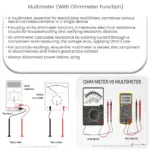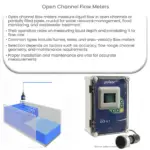How to Test an Electrical Circuit for Continuity
Testing an electrical circuit for continuity is an essential diagnostic technique for identifying faults in electrical circuits. Continuity testing involves checking for the integrity of a circuit, ensuring that the electrical current can flow without any interruption. It helps to diagnose faults such as open circuits, short circuits, and broken wires. Continuity testing is crucial in ensuring electrical safety and preventing fire hazards caused by faulty circuits.
Tools Needed for Electrical Circuit Continuity Test
To test an electrical circuit for continuity, you will need a few basic tools, including a multimeter, a pair of test leads, and a voltage tester. A multimeter is a versatile tool that measures voltage, resistance, and continuity in electrical circuits. The test leads are the cables that connect the multimeter to the circuit, and the voltage tester is used to check whether there is any voltage present in the circuit.
Steps to Test Electrical Circuit for Continuity
The following are the steps for testing an electrical circuit for continuity:
- Turn off the power supply to the circuit.
- Set the multimeter to the continuity setting.
- Connect the test leads to the multimeter and touch the two ends of the circuit.
- If there is continuity, the multimeter will beep or display a value.
- If there is no continuity, check for any breaks in the circuit or faulty components.
Applications of Continuity Testing in Electrical Circuits
Continuity testing is used in various applications in electrical circuits. For instance, it is used to check the continuity of a wire, a fuse, or a switch. It is also used to test the continuity of heating elements in appliances such as ovens and water heaters. In addition, continuity testing is used to check the integrity of the ground connection in electrical circuits. Continuity testing is therefore an essential diagnostic tool in maintaining and troubleshooting electrical circuits, ensuring electrical safety and preventing fire hazards.




